
On October 10, 2014, a new page appeared on Facebook attributed to illustrator Aaron Horkey and creative director Mitch Putnam. The first post was a sketch of distinctly Horkeyian creation—an ink drawing of a building, organic sacs clinging to Ionic columns. Etched in the marble frontispiece was a single word: VACVVM.
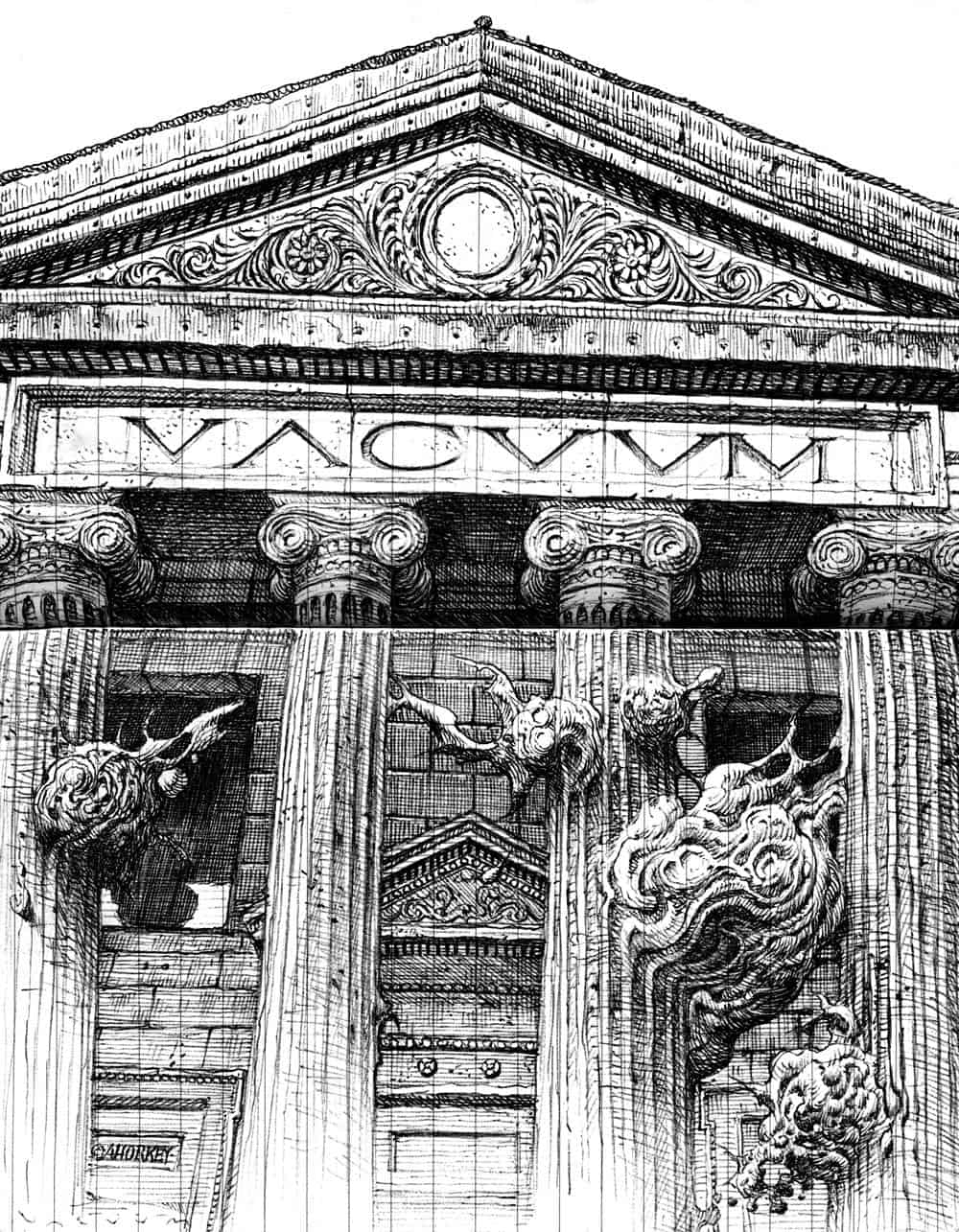
The First Vacvvm Image Facebook | by Aaron Horkey
A day later, there was a rumbling in the niche world of poster collectors. Horkey had started an Instagram account. With a career cloaked in radio silence, his fans’ surprise was palpable. His first post was a pencil and gouache piece titled “Osprey #1.” It was hashtagged #itsme #aaronhorkey. “I don’t possess the desire to bask in the spotlight or be the center of attention,” Horkey says. “When Mitch suggested having a dedicated online outlet for my work, I thought I’d rather build a team with my friends than go it alone.”
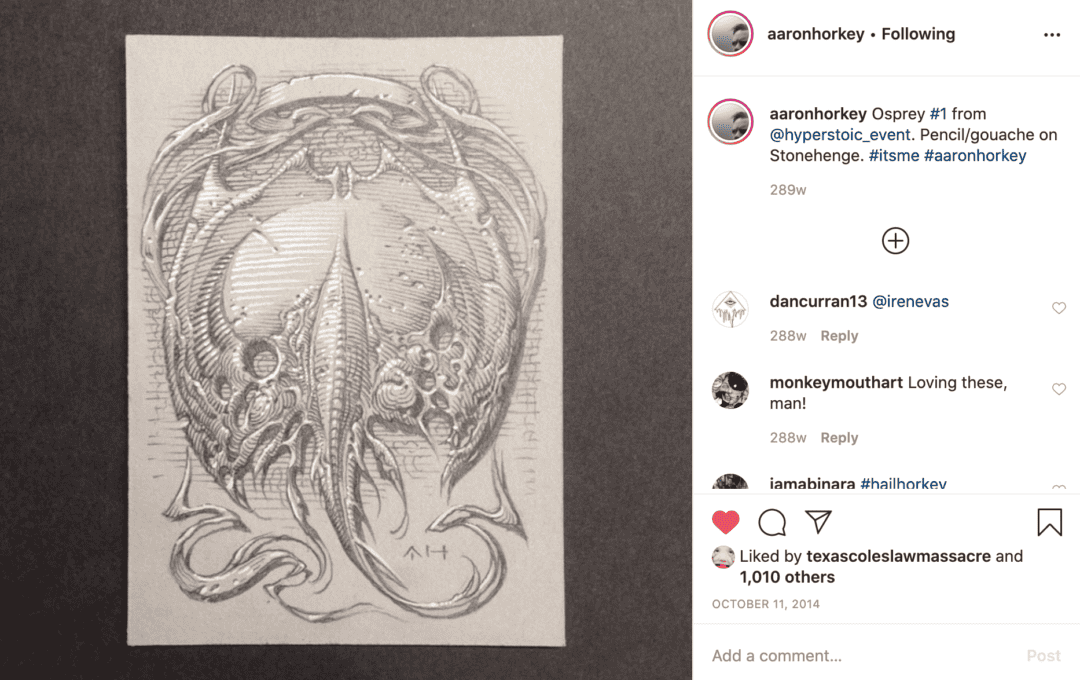
Aaron Horkey’s first social media post, Instagram October 11, 2014
The lone bit of information the mysterious Minneapolis-based illustration group known as The Vacvvm offers about itself on its social media platforms simply reads: “An international illustration cult. Co-founded by Aaron Horkey and Mitch Putnam.” It’s an altogether vague explanation if you are not aware of either of those names, and the “illustration cult” descriptor does nothing to clarify its purpose or goal. But for fans who follow the group’s work on its website and social media accounts—including an Instagram following of 62,000 and counting—The Vacvvm acts as a brand, creating and selling limited-edition art prints and goods from top-tier illustrators and artists. In Putnam and Horkey combined, the art collectibles world has its own Steve Jobs—a name that guarantees a preeminent level of quality control. Many Vacvvm devotees preorder limited-edition prints they’ve never seen, in full confidence, that they will not be disappointed.
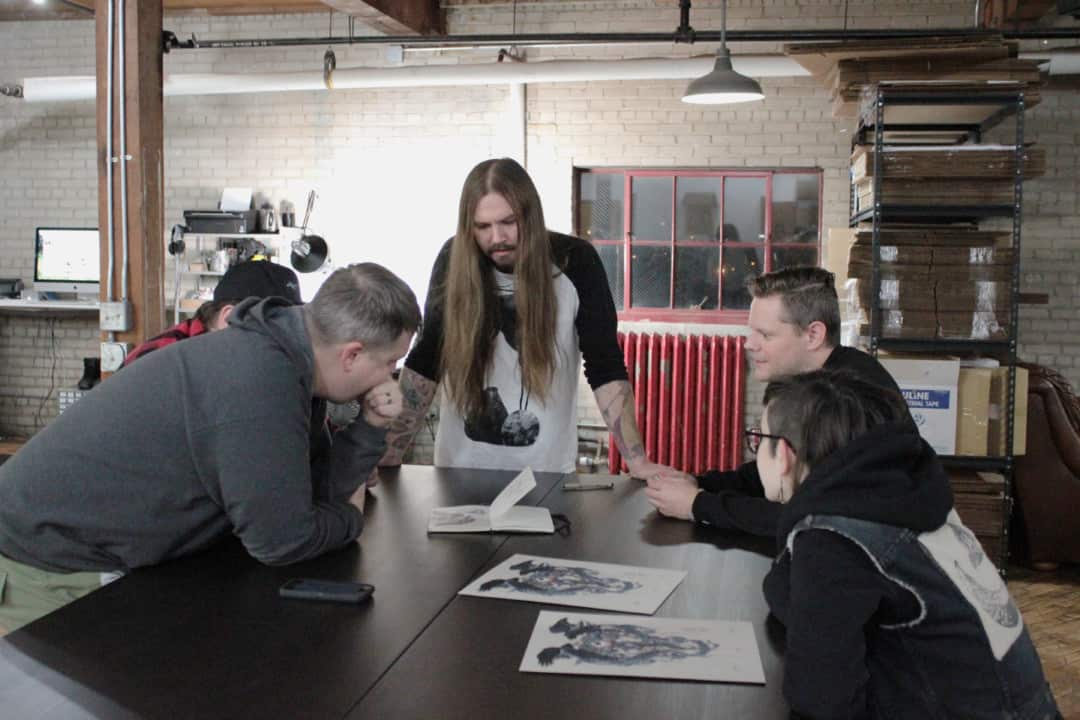
Mike Sutfin, Brandon Holt, Aaron Horkey, and Teagan White at The Vacvvm headquarters in Minneapolis, MN. | Photo by Ben LaFond
As a concept, The Vacvvm is an attempt to turn the inherent solitude of the artist and illustrator into a group effort—creative motivation found beneath a common banner. The group takes the role of the isolated illustrator and places it in the context of a team. The Vacvvm is cult-building, a brand applying the existing tools of spectator sports to the craft of art creation. Horkey explains: “Growing up I was obsessed with underground comix and skateboarding. The mythos of the Zap artists in the late ’60s/early ’70s and the assembling of the Bones Brigade and, later, the formation of the initial Plan B team in the early ’90s, were serious inspirational touchstones for putting together The Vacvvm.”
The Vacvvm is comprised of illustrators who work in the world of gig posters, editorial illustration, book and package design, as well as personally commissioned work. Through his role as creative director at Mondo, the boutique poster gallery and art department of the Alamo Drafthouse, Putnam is constantly working with illustrators and printmakers on pop culture–based posters and other collectibles. With Horkey at his side, they set out to take those creatives and, as Putnam puts it, “create an environment conducive to the creation of personal, exploratory work.”
The roster of The Vacvvm is an international collection of like-minded illustrators including Randy Ortiz (Canada), João Ruas (Brazil), Nicolas Delort (France), Ken Taylor (Australia), Vania Zouravliov (Russia), Vanessa Foley (England), as well as U.S.–based artists Mike Sutfin, Brandon Holt, Teagan White, and Jes Seamans. The number of members continues to grow as Putnam and Horkey discover new artists that fit within the aesthetic of their vision for the team.

‘Aftermath’ by Mike Sutfin
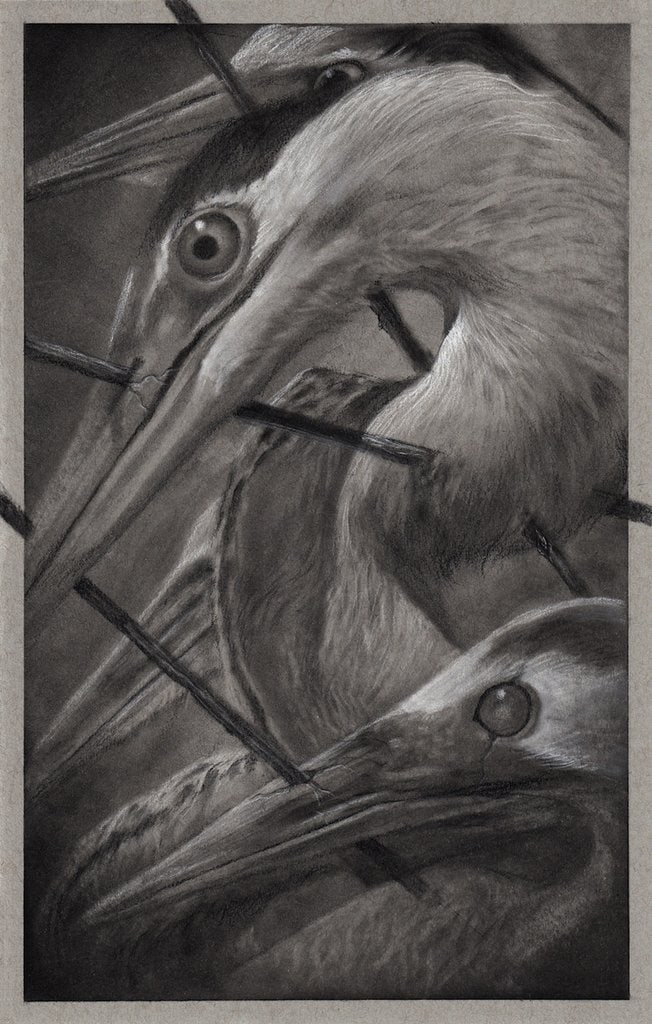
‘Ardeidae’ by Randy Ortiz
The makeup of the group began with Horkey and Putnam’s own tastes. Each artist invited to join was seen through a lens of kinship. These are artists Horkey and Putnam admired and felt deserved more attention than they were receiving. “We also tried to keep the domestic artists rooted in some way to the Midwest,” Putnam says. “We are headquartered in Minneapolis, and the five American members are either living in Minnesota or are close to the area. The other six are international, which we felt was important, as they often face the biggest challenges with print publishing, selling, and shipping.” The concept is as practical as it is altruistic.
Winnipeg, Canada–based member Randy Ortiz echoes Putnam’s sentiment. “I think The Vacvvm has exposed (I know this a trigger word for most professional artists, but stick with me here) me to a wider audience,” he says. “I know when they post some of my work on their Instagram, I get a ton of new followers and eyes on my work. But aside from that, it’s also a great way to sell my prints. I don’t think I’d get half as many prints sold on my own. Plus, Mitch does all the fancy packaging and shipping stuff that I passionately hate doing myself. It might seem minor, but it really helps free up my time to just keep making more art.”
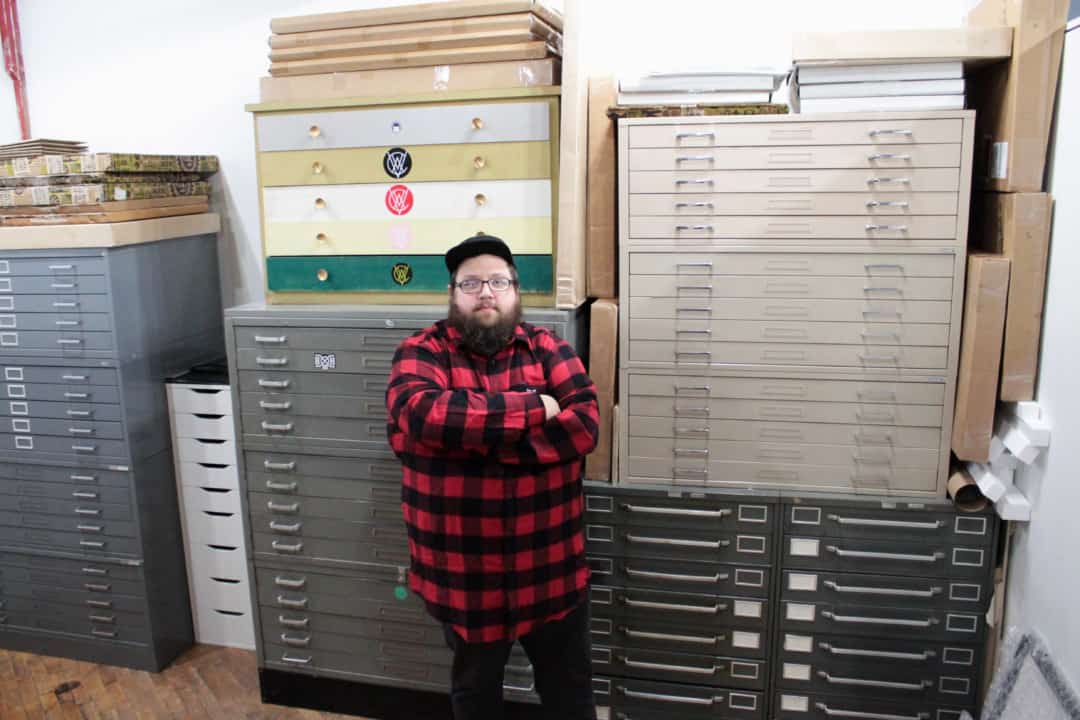
Creative Director Mitch Putnam at The Vacvvm headquarters, Minneapolis, MMN | Photo by Ben LaFond
In Putnam, each member has an outlet for turning their personal work into something tangible—a poster, a T-shirt, a pin, button, or patch. Once the art is final, Putnam takes over and makes it a reality, handling all aspects of the production, marketing and shipping. As Australian member Ken Taylor puts it, “Being part of The Vacvvm enables me to have the confidence to be able to release something purely based on the idea of doing something I love, with no real regard to commercial confines. Releasing a piece through The Vacvvm ensures that all the right eyes will see the work and more often than not appreciate it accordingly.”

‘Masque’ by Ken Taylor
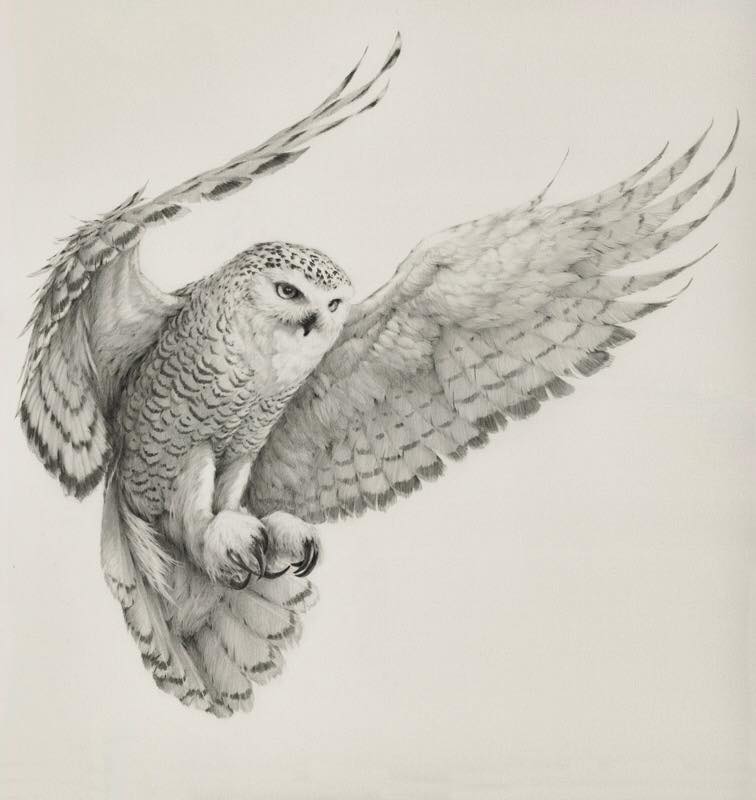
‘Owl’ by Vanessa Foley
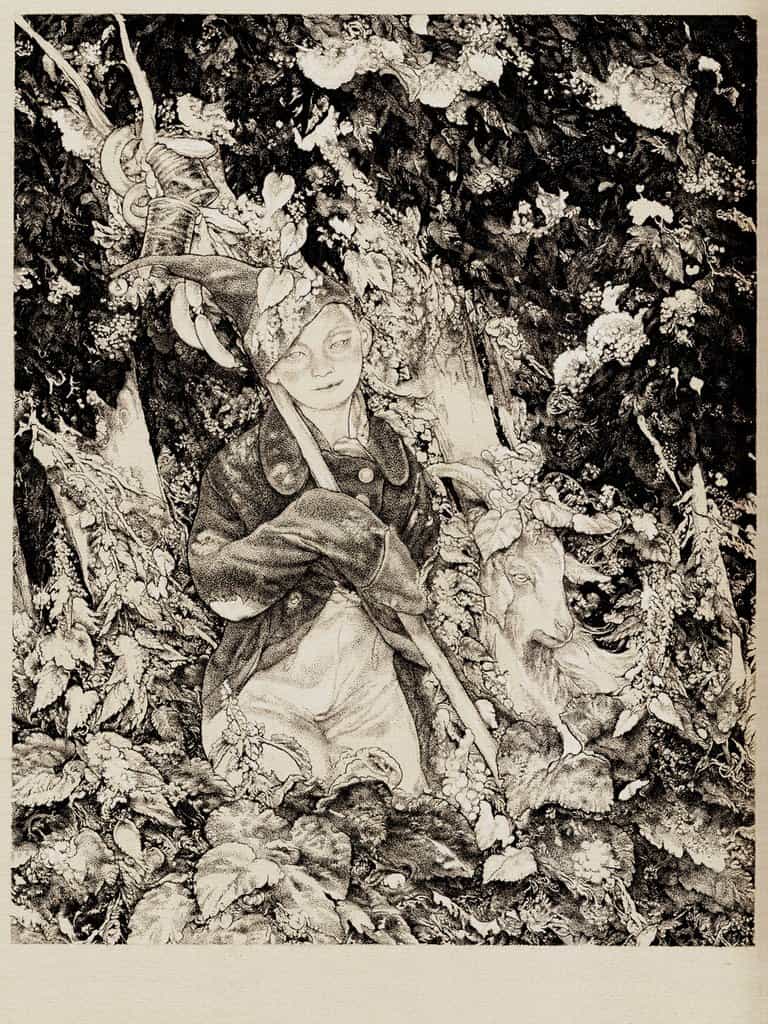
‘Petrushka’ by Vania Zouravliov
For the first year of its existence, The Vacvvm was purely a digital endeavor. The artists joined together via the group’s website and communications with Putnam. There were no set release dates and no deadlines for any of the members. The group was there to act as a catalyst for the creation of personal work in between paying gigs. “Going into this, I knew that each member would have varied output,” explains Putnam. “Plus many of them work very slowly. I do my best to work around everyone’s schedule while also suggesting projects that will advance the presence of the group.”
The first release, “Black Lake,” was a timed edition by Horkey. The art was from a gig poster Horkey had done for the Portland-based metal band Agalloch, for a leg of performances in 2011. At the end of the 24-hour purchase window, the one-color letterpress print ended as an edition of 442. With no marketing outside of a Facebook post, The Vacvvm was an immediate success.
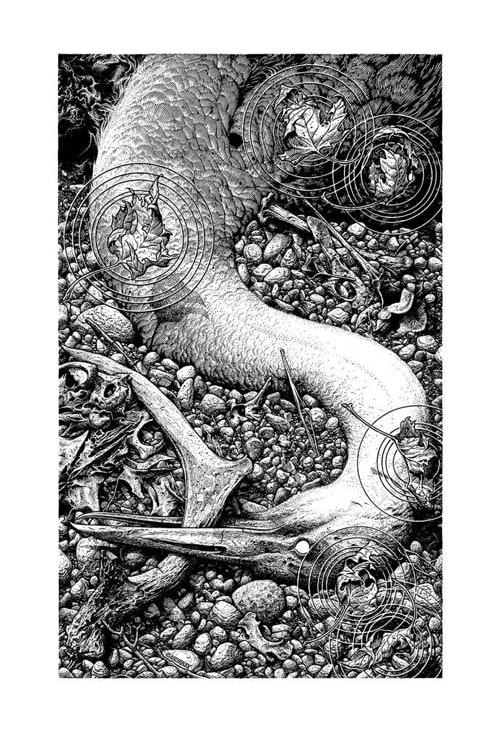
‘Black Lake’ by Aaron Horkey

‘Machine Hat’ by Joao Ruas
“A lot of good and regular art gets made because of who you talk to. No one is immune to human contact and art is not made in a vacuum.” This quote, attributed to the artist R.B. Kitaj, has been used in art history texts as a way to explain the phenomenon of iterations of ideas. For Horkey and his illustration cult, the name of the group can be seen as acceptance of this fact. The Vacvvm’s artists carry with them the wealth of experience, both shared and in solitude, that has formed their visual styles. Art is not made in a vacuum, but is an active dialogue between yesterday and today, the internal and the external. In the illustrations of Brandon Holt and Nicolas Delort, you see the influence of the classic engravings of Gustave Doré—an ongoing conversation across history.

Aaron Horkey logo (L), Original logo also by Horkey (C), and Teagan White’s version of the logo (R)
The name and logo are Horkey creations, ones he chose for their design quality. “A big consideration was how the word would appear visually, and having all those zigzag lines broken up by a single curve of the ‘C’ was very appealing.” The constricted band of inverted lines has been used on a body of merchandise that is integral to The Vacvvm. Putnam clarifies the role of these branded items: “I think part of the idea was always to put more branded projects out there. We like to refer to The Vacvvm as a cult, and we’re constantly trying to expand the cult. It is my job to make sure that as many people know these artists as possible, and every time someone sees a shirt or a pin on a friend, the message spreads. So even though merch isn’t a big profit center, it is our chosen form of advertising, while also putting small, affordable pieces of art into the world.” The logo, printed across various products in a bevy of styles, applies the brand-awareness tools of a company like Nike or Adidas to a crew of reclusive illustrators. It serves as a step toward making art as vital to everyday life as more accessible forms of entertainment from the worlds of sports, music and film.
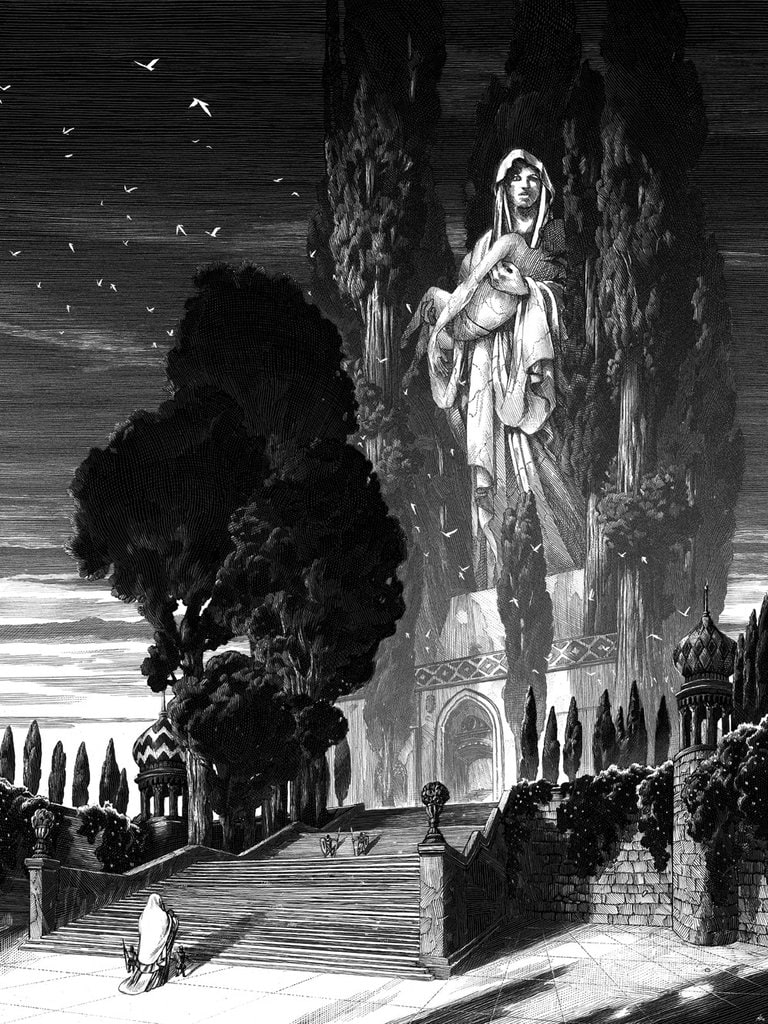
‘Shrine Of The Mother’ by Nicolas Delort

‘The Wanton Sea’ by Jes Seamans for The Vacvvm
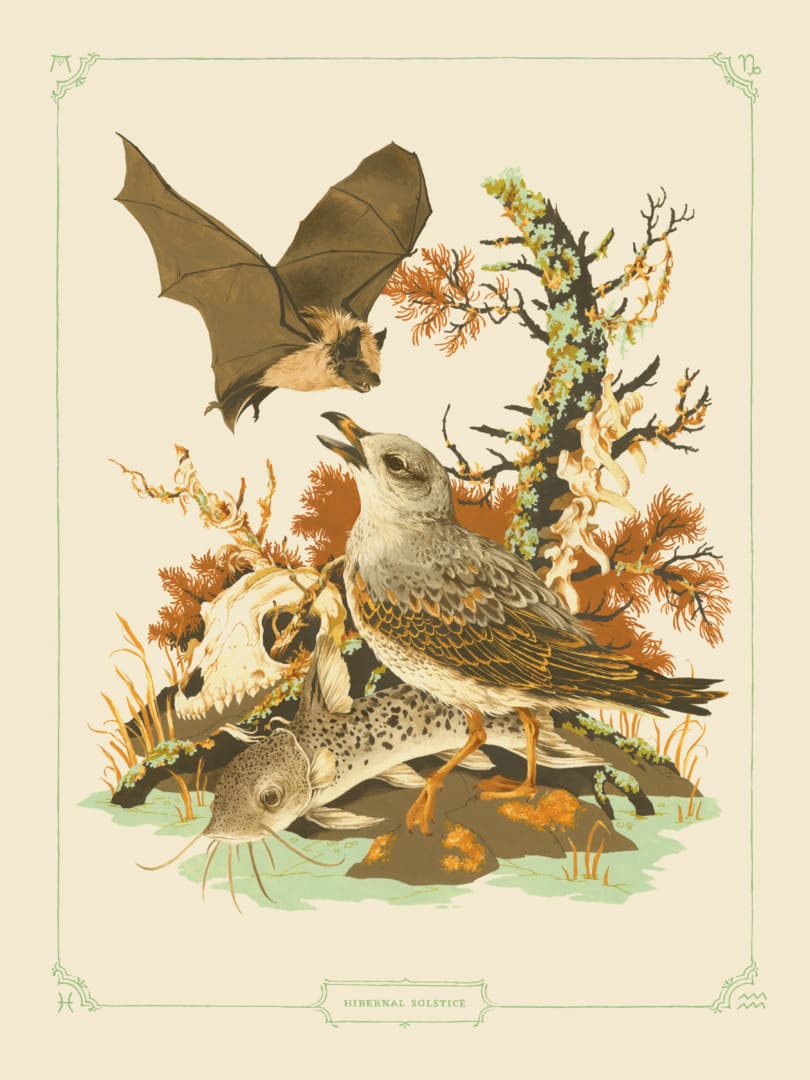
‘Hibernal Solstice’ by Teagan White
The Northrup King Building in northeast Minneapolis sits alongside two sets of train tracks, an optimal location for its first use when it was built in 1917, to store and ship seeds across the country. The building now hosts more than 180 tenants, most of whom are artists. This is the home of The Vacvvm. Putnam relocated his family from Sioux City, IA, to Minneapolis with the intention of moving his inventory of posters and other merchandise out of his house and into a proper space. With members Mike Sutfin, Holt, Horkey, and Teagan White calling Minneapolis home, the space also acts as a workshop. “Spending time together definitely leads to more camaraderie, and the conversations naturally gravitate toward future projects.” This is how Putnam describes the beginning of a new endeavor for The Vacvvm: “gallery events.”
“Silent Aviary,” the first exhibit from The Vacvvm, combined the talents of White and the group’s newest member, the England-based Vanessa Foley. Together, they have a shared love of flora and fauna, the wilderness and the creatures that mill about the forest terrain. “The theme for the show was native Minnesotan birds—again, Mitch’s idea—but after that each artist had free reign as to how that was interpreted,” Foley explains. Each member of The Vacvvm (minus Zouravliov) contributed a piece, as did a host of outside illustrators and fine artists.
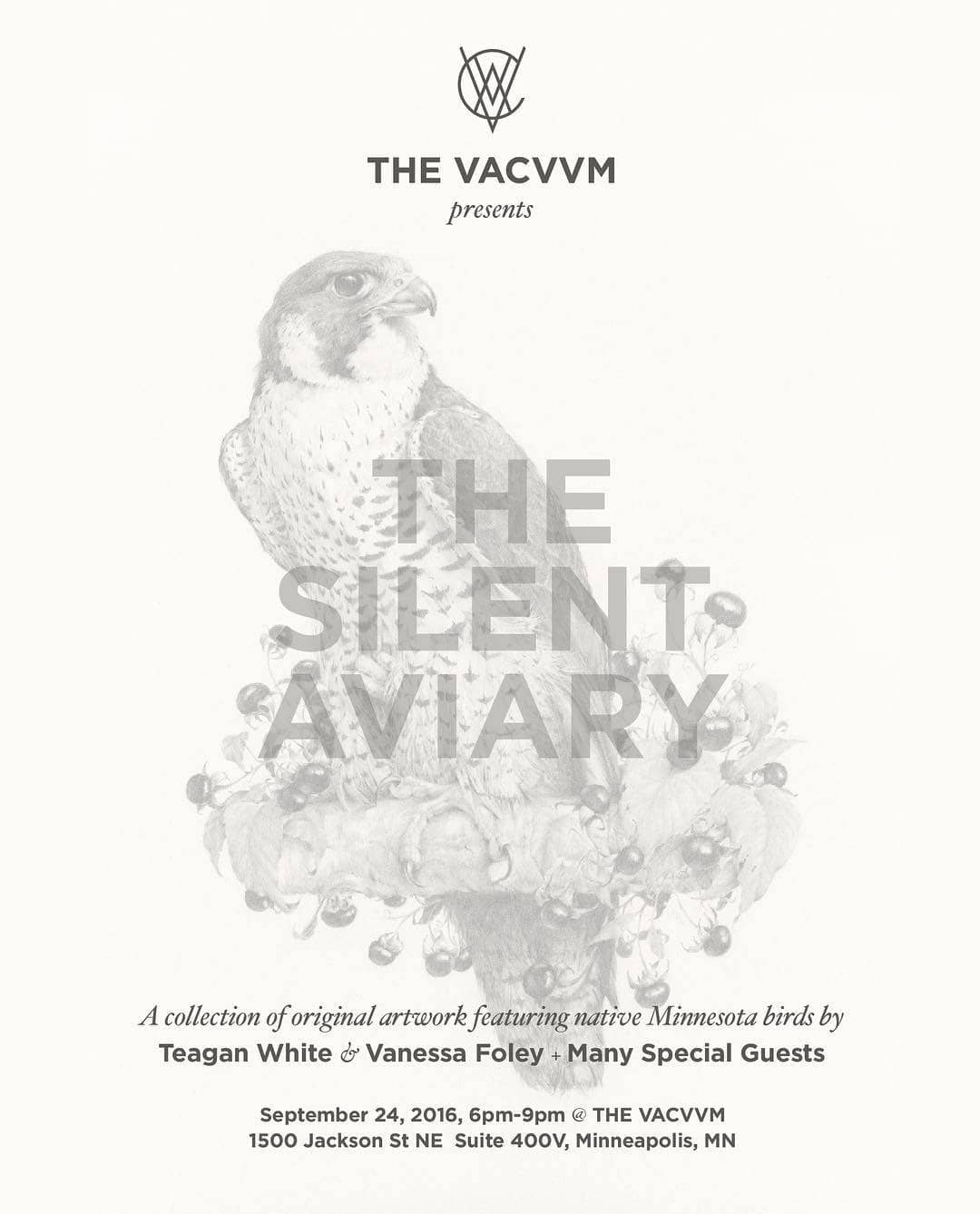
‘The Silent Aviary’ Event at The Vacvvm in Minneapolis, Minnesota 2016
The majority of Foley’s work is for American galleries, which she rarely gets to visit. She was flown out to attend the opening of “Silent Aviary,” a chance to meet and shake hands and put faces to names. Providing this opportunity is essential to The Vacvvm and Putnam’s other projects. They are attempts at creating connections and community, building something beyond an email list, and putting artists in the same room to see what happens—“Magic, for lack of a better descriptor,” Horkey says. He puts this above all else in his vision for the group. “It’s more than just raw talent, which everyone in the crew has in spades. All the members of The Vacvvm produce work which excites me to no end, and they all do so with an unnervingly natural ease; nothing is forced or contrived. For instance, when you watch Brandon [Holt] summon a drawing, there’s no hesitation involved. The piece is just lying beneath the surface, and he’s excavating it—pure alchemy. I also wanted to build a squad of not only the finest draughtsmen, but of honest, stand-up humans, and that’s precisely what we ended up with.”
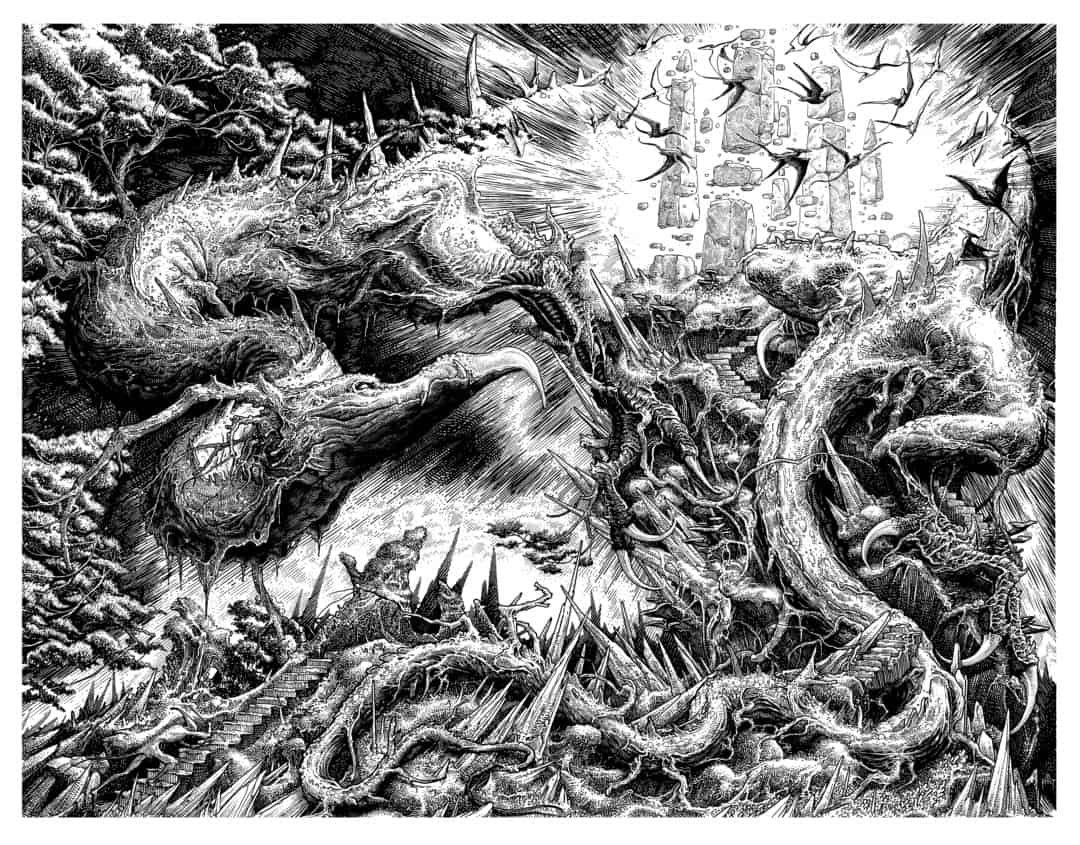
Illustration by Brandon Holt
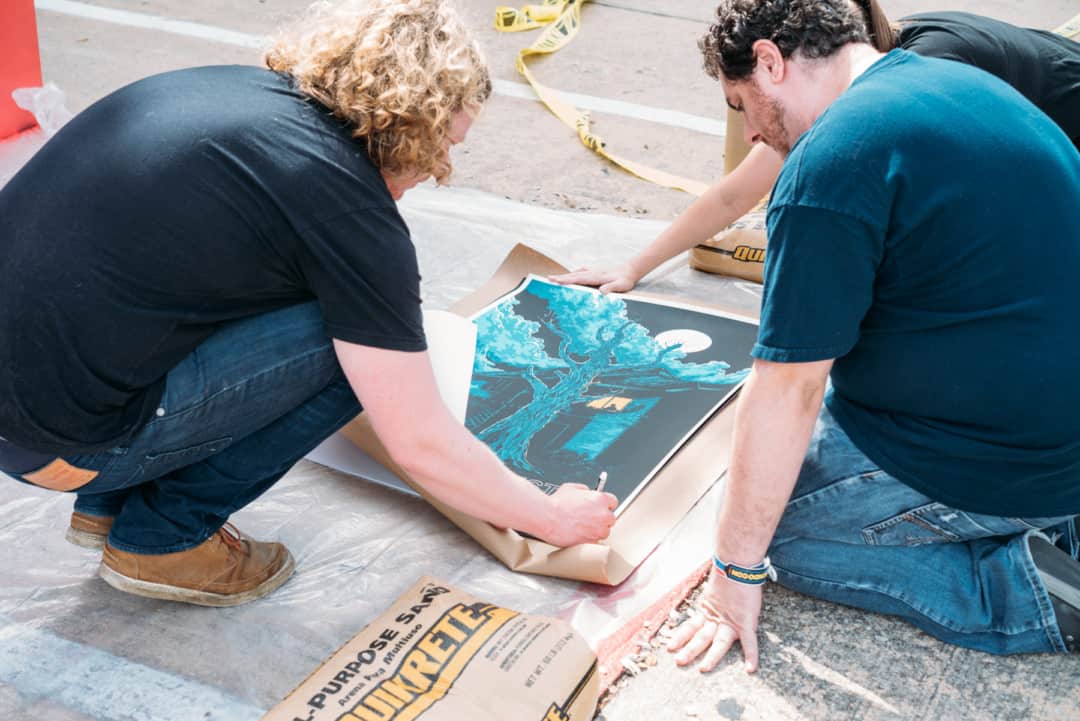
Illustrator Ken Taylor signing prints for fans outside of MondoCon | Photo by Alison Narro
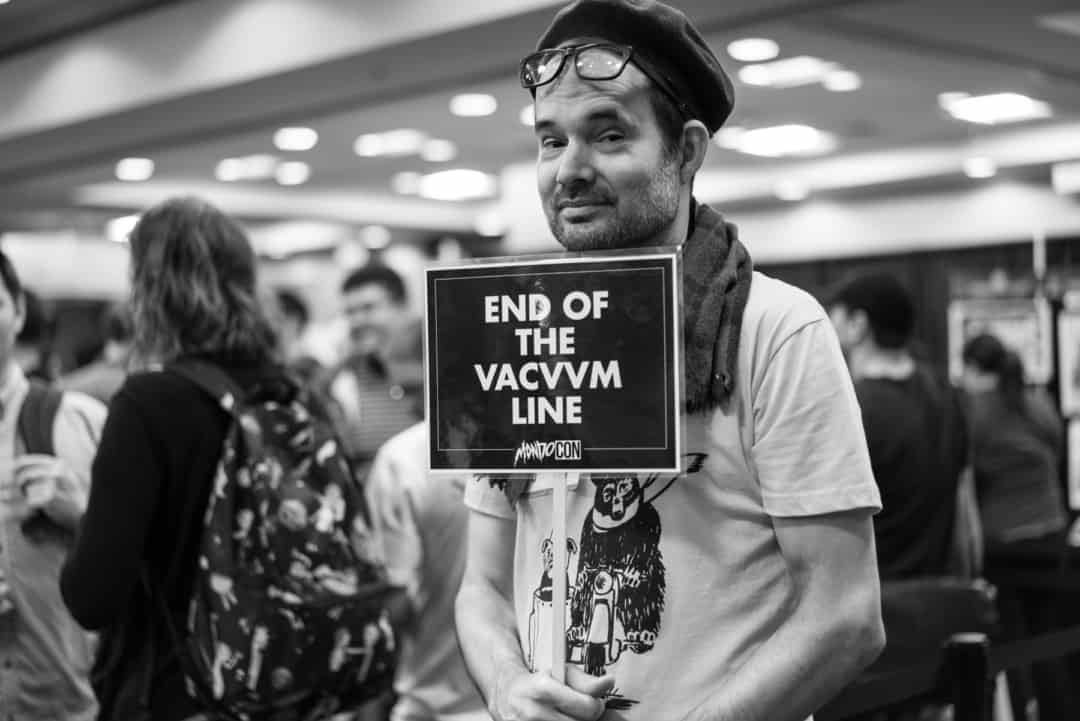
The line for The Vacvvm booth at MondoCon | Photo by Alison Narro
In late 2016, Delort arrived in Austin, TX, from Paris to attend MondoCon, a poster and collectibles convention where The Vacvvm had a booth. For Delort, it was a chance to meet collectors, fans, and others that had supported his career throughout the years. Putnam brought out fellow members Taylor from Australia and João Ruas from Brazil to simply be there and be seen. Taylor spent the weekend painting a mural and signing posters for fans while Ruas and Delort sketched at the booth alongside Sutfin and Holt. Each member had a new print released at the event, but what the group’s attendance gave the spectators falls in line with Horkey’s initial inspiration for the group: “I think of The Vacvvm more as a skateboard team than an art collective; we have a team manager, an insane roster of pros, a few amateurs working their way through the ranks, and some younger folks on flow. Most of us travel together and just shred.”
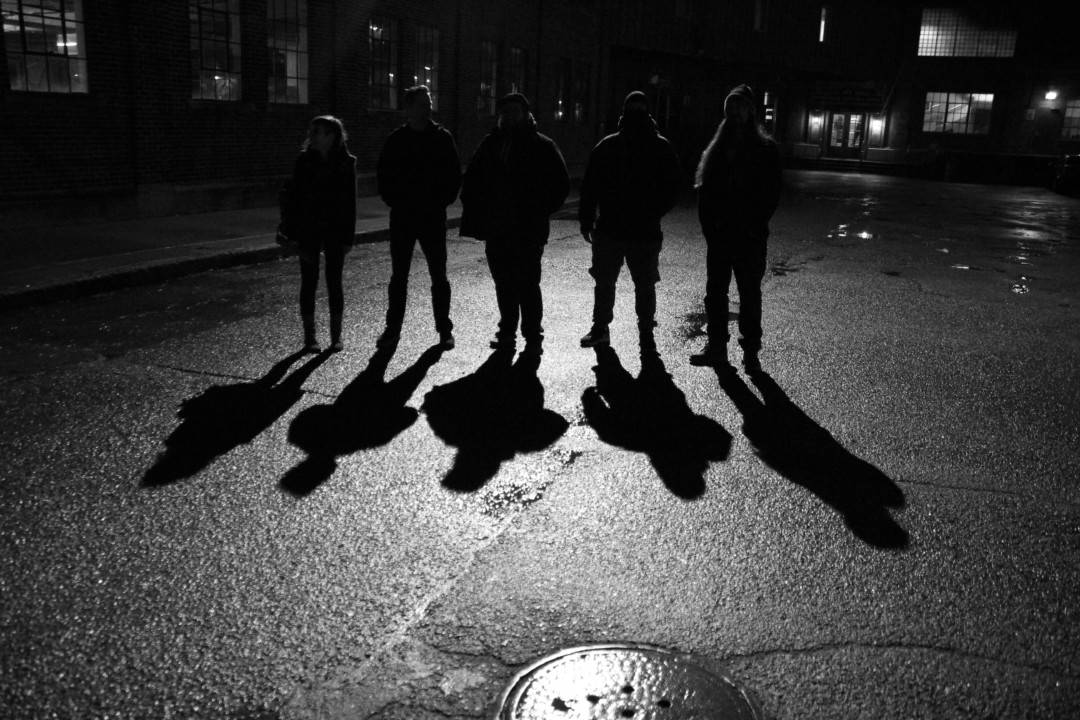
The Vacvvm in their hometown of Minneapolis, MN | Photo by Ben LaFond
This article was originally published in the Spring 2017 issue of HOW Magazine
